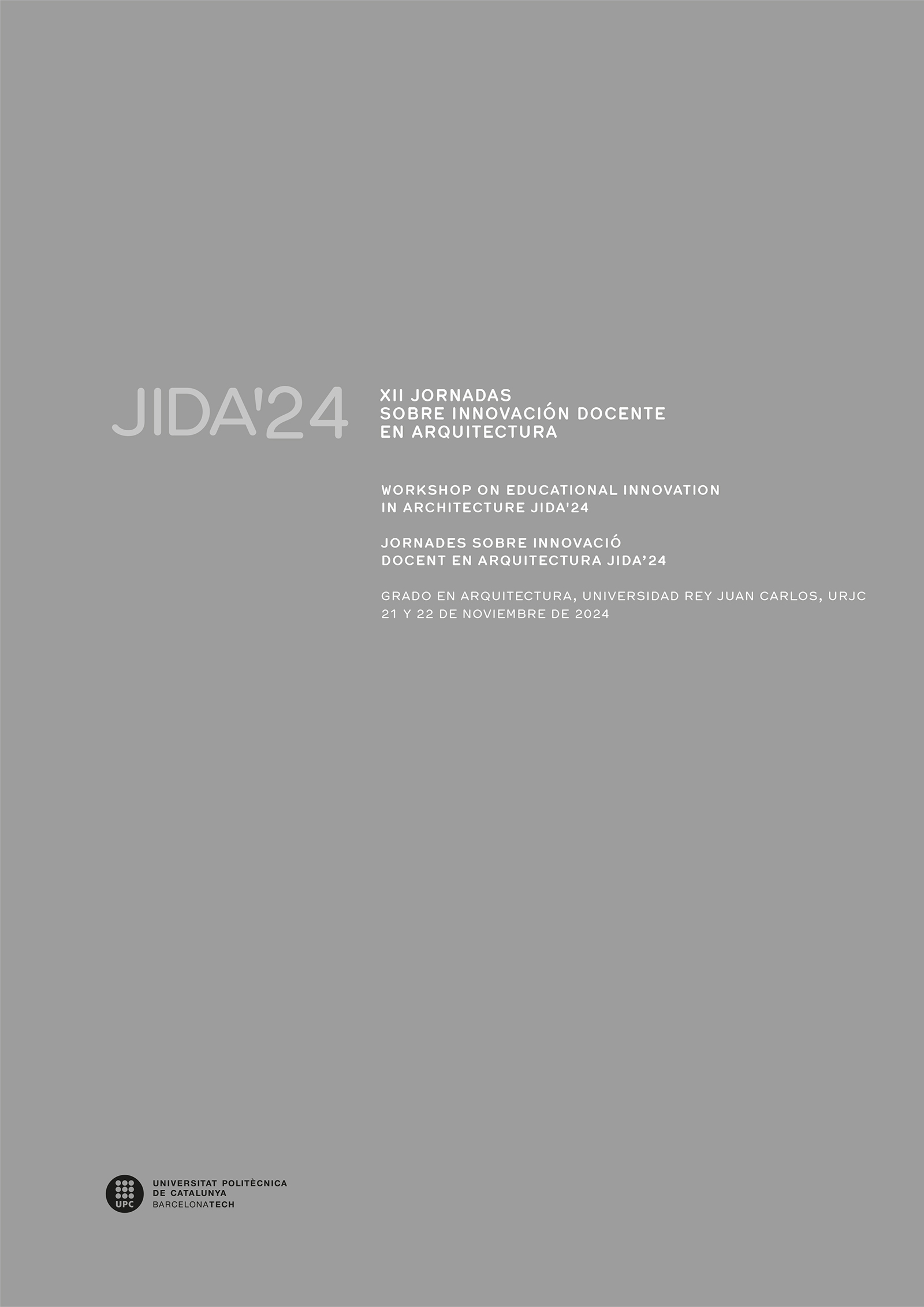From the individual to the collective, and vice versa: architecture for coexistence
DOI:
https://doi.org/10.5821/jida.2024.13290Keywords:
collective work, coexistence, city, blended learning environment, reverse developmentAbstract
Coexistence involves the agreement between two or more participants to have something in common. A dialogue where individual and collective interests of changing intensities overlap, but which foster encounters and opportunities. However, the environment we inhabit and the way we relate to each other show the opposite. The built environment is fragmented and individualistic. Thus, the communication shows the development of two design studios. One in an urban context and the other in a natural one. And, through individual and collective work, the aim is to show how in both workshops under the same methodology, but applied in reverse, the personalist sense of the project can be changed by the understanding of a common whole. In both cases, each project ends up coexisting with that of the rest of the student group.
References
Barberá Pastor, Carlos [et al.]. 2018. «Relaciones desde lo individual a lo colectivo. Tres ejercicios de Composición Arquitectónica». A: García Escudero, Daniel; Bardí Milà, Berta, eds. VI Jornadas sobre Innovación Docente en Arquitectura (JIDA'18), Escuela de Ingeniería y Arquitectura de Zaragoza, 22 y 23 de Noviembre de 2018. Barcelona: UPC IDP; GILDA; Zaragoza: Servicio de Publicaciones de la Universidad de Zaragoza. ISBN: 978-84-9880-722-6 (UPC), p. 175-186.
Coello-Torres, C. 2020. «Blended learning en la enseñanza de proyectos arquitectónicos a través de Miro». A: García Escudero, D.; Bardí Milà, B, eds. VIII Jornadas sobre Innovación Docente en Arquitectura (JIDA'20), Escuela Técnica Superior de Arquitectura de Málaga, 12 y 13 de Noviembre de 2020: libro de actas. Barcelona: UPC. IDP; GILDA; UMA editorial. ISBN: 978-84-9880-858-2 (IDP-UPC); ISBN: 978-84-1335-032-5 (UMA EDITORIAL), p. 771-779.
Dewey, J. 2004. Experiencia y Educación. Madrid, España: Biblioteca Nueva.
Juárez-Chicote, Antonio. 2016. «Dimensión mínima, apertura máxima: hacia un alfabeto del proyecto arquitectónico». A: Garcia Escudero, Daniel; Bardí Milà, Berta; Domingo Calabuig, Débora, eds. IV Jornadas sobre Innovación Docente en Arquitectura (JIDA'16), Escuela Técnica Superior de Arquitectura de Valencia, 20 y 21 de Octubre de 2016. Valencia: UPV; Barcelona: UPC IDP; GILDA. ISBN: 978-84-9048-338-1 (UPV); ISBN: 978-84-9880-596-3 (UPC), p. 174-190.
Loren-Méndez, Mar [et al.]. 2021. «Participación activa del estudiante: gamificación y creatividad como estrategias docentes». A: Garcia Escudero, Daniel; Bardí Milà, Berta, eds. IX Jornadas sobre Innovación Docente en Arquitectura (JIDA'21), Escuela Técnica Superior de Arquitectura de Valladolid, 11 y 12 de Noviembre de 2021: libro de actas. Barcelona: UPC IDP; GILDA. ISBN: 978-84-9880-969-5, p. 660-971.
Mansilla, L. M. 2023. Textos Críticos. Madrid: Asimétricas.
Moreno Moreno, María Pura. 2018. «Uso docente de la red social “Instagram” en la asignatura de Proyectos 1». A: García Escudero, Daniel; Bardí Milà, Berta, eds. VI Jornadas sobre Innovación Docente en Arquitectura (JIDA'18), Escuela de Ingeniería y Arquitectura de Zaragoza, 22 y 23 de Noviembre de 2018. Barcelona: UPC IDP; GILDA; Zaragoza: Servicio de Publicaciones de la Universidad de Zaragoza. ISBN: 978-84-9880-722-6 (UPC), p. 508-518.
Vigouroux, O. 2017. Modelos Didácticos. Santiago, Chile: Ediciones ARQ.






















